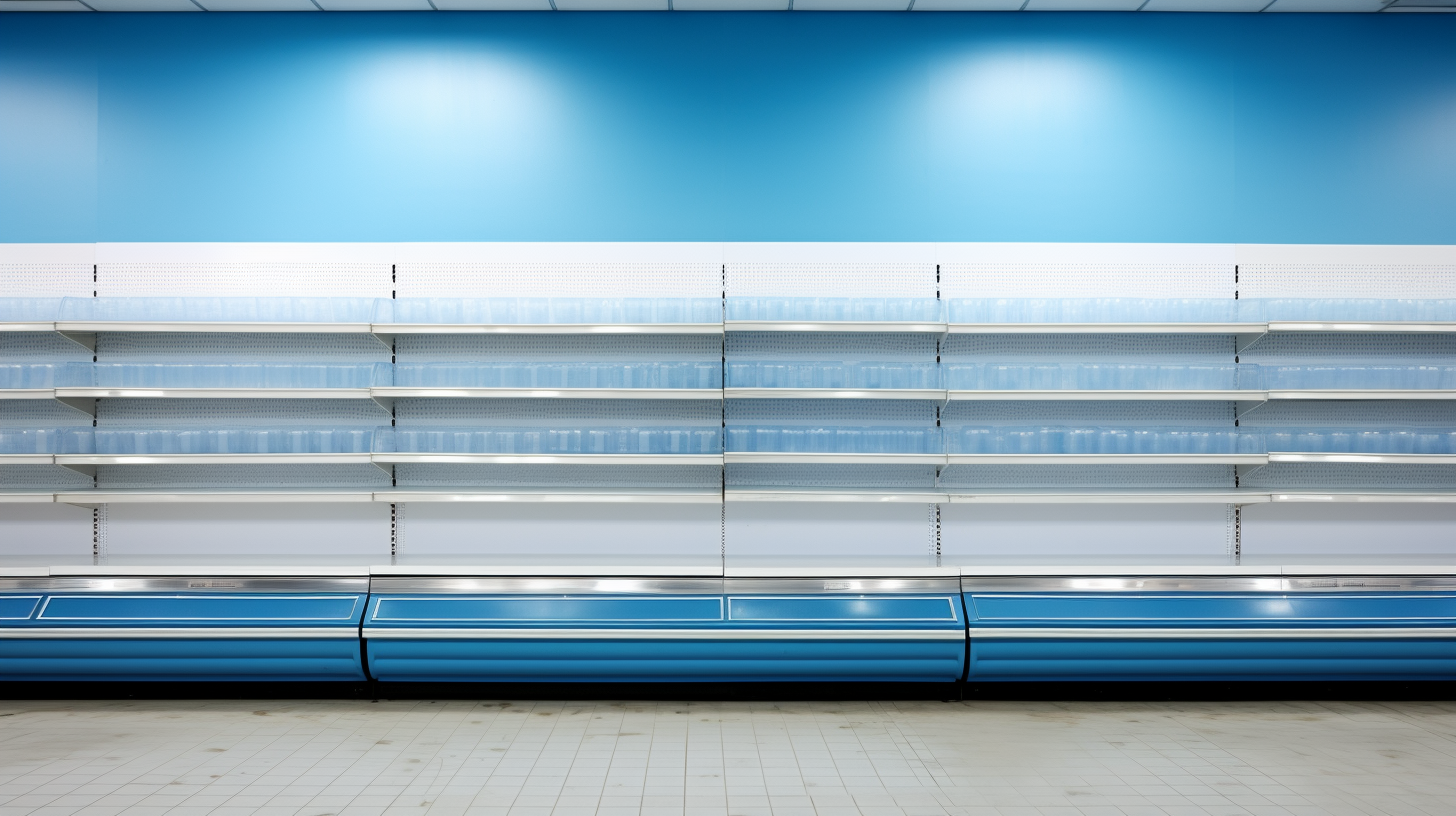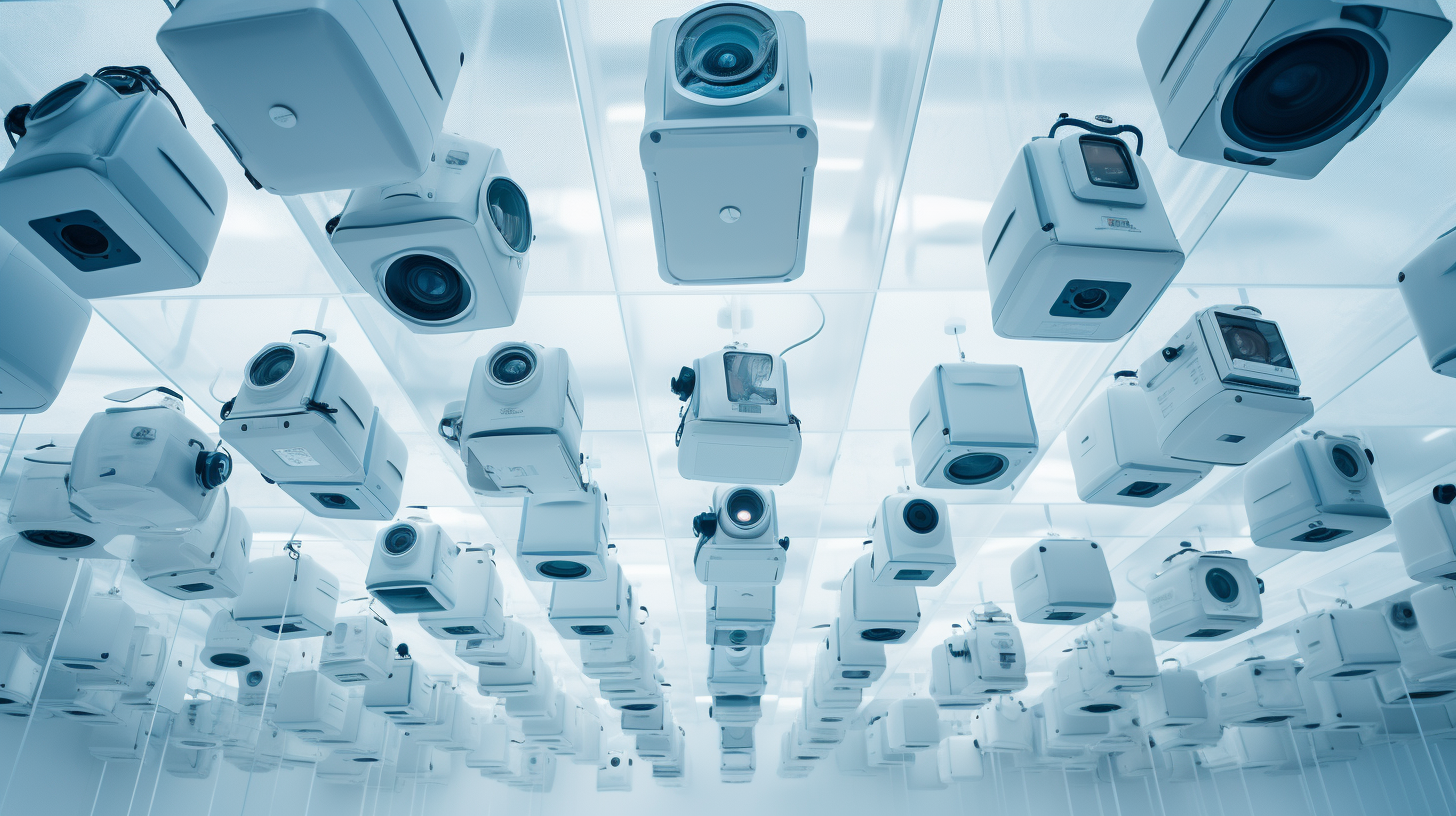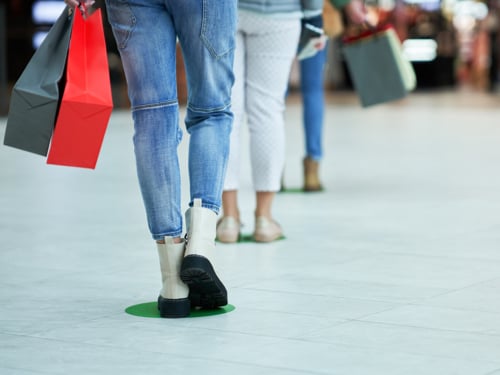Theft Prevention in Brick and Mortar Retailing
Learn why theft prevention is a particularly important issue for brick-and-mortar retailers, where theft can happen, and how to secure self-checkout areas against theft.
- Inventory Differences as a Motivation for More Theft Prevention
- Where does shoplifting occur in the store?
- Theft Associated With Self-Checkout Technologies

Inventory Differences as a Motivation for More Theft Prevention
Stationary retail is repeatedly confronted with the unpleasant reality of inventory discrepancies. According to a recent study by the EHI Retail Institute, these will increase by 12 percent year-on-year to 4.6 billion euros in 2023. Although retail activity has returned to normal following the end of the pandemic in 2022, uncertainty factors such as the war in Ukraine, high inflation and the energy crisis have led to changes in customer behavior.
The average level of inventory differences at selling prices across industries is 0.99 percent of gross sales, just below the rule of thumb of one percent of sales. Overall, inventory differences at retail prices in the German retail sector show an increase of around 12 percent in 2022, while theft has increased by 15 percent.
After cuts in previous years, companies have increased their spending on theft prevention measures again to €1.45 billion in 2022. The seemingly dramatic increase in inventory discrepancies turns out, on closer inspection, to be a return to "normality" before the Corona pandemic, as the comparative figures for 2019 show. However, this should not obscure the fact that increasing shoplifting remains a major threat.
To meet this challenge, retail companies are currently placing particular emphasis on staff training and the targeted evaluation of data with the help of merchandise management systems and data warehouses. During the years of the pandemic, employee training was often neglected, but is now gaining in importance again. In addition, the expansion and modernization of camera systems for monitoring sales areas is being stepped up. Around 20 percent of companies are increasingly using anti-theft sales aids. Classic department store detectives and door men are being used more again after their use was reduced in previous years. Electronic and mechanical means of securing merchandise are also increasingly being used.
Preventing shoplifting remains an ongoing challenge for retailers. Companies need to focus more on employee training, modern technologies and prevention measures to minimize their losses and ensure security in their stores. Only in this way can they effectively counteract theft and inventory discrepancies and be successful in the long term.
Where does shoplifting occur in the store?
Shoplifting in brick-and-mortar retail can occur in a variety of places within a store. Here are some of the most common areas where theft can occur:
- Sales floor: this includes the area where items are accessible to customers. Perpetrators:inside can commit thefts here by picking pockets, pocketing small items, removing labels or ripping off packaging.
- Locker rooms: Theft can occur in changing rooms because customers are unobserved here. Items can be hidden in bags or clothing and then smuggled out of the store.
- Checkout area: Both employees and customers can commit theft in the checkout area. This can happen, for example, by replacing price tags, adding products to the shopping cart without payment, or manipulating checkout procedures.
- Warehouse area: Theft can also occur in the warehouse area, either by employees or by external persons who have access to the warehouse. Merchandise can be stolen here and then removed from the store or otherwise illegally resold.
- Delivery and Receipt of Goods: Theft can also occur during the delivery process or upon receipt of delivered goods. Products can either be stolen in transit or diverted during delivery.

Theft Associated With Self-Checkout Technologies
According to a 2018 study by retail research firm EHI Retail Institute, self-checkout systems are more susceptible to theft than traditional checkouts. The study shows that the percentage of thefts at self-checkout systems is higher than at conventional checkouts. Thefts can occur, for example, by intentionally not scanning items, relabeling products or falsifying weight information for unpackaged products.
Measures Against Theft for Self-Checkout Technologies
There are various ways in which self-checkout theft can be prevented. For example, retailers can rely on deterrence or use sophisticated systems to develop effective shoplifting prevention. Here are some examples and tips:
- Video surveillance: a camera can capture corners that are difficult to see.Installing surveillance cameras near self-checkout counters can also help deter theft and, in the case of theft, serve as evidence to report shoplifters to the police, especially in cases of repeated theft.
- Weight sensors: weight sensors can be integrated into self-checkout kiosks to verify the weight of scanned products. If the actual weight does not match the expected weight, an alarm can be triggered. Items that need to be weighed are thus given digital article surveillance, and the alarm can deter thieves.
- Random spot checks: Regular random checks at self-checkout counters by staffers ensure that customers have scanned and paid for all items correctly.
- Customer training: Retailers can provide information to customers to educate them on the correct use of self-checkout and the consequences of theft.
- Artificial intelligence: AI technologies can be used to detect suspicious behavior or patterns. For example, deviations in scanning behavior or noticeable transaction patterns can be identified and flagged as potential theft. In this way, attempted theft can be prevented in advance.
User experience aligned with security concepts for self-checkout technologies
Despite rising inventory discrepancies and theft rates, the customer's user experience must not be forgotten in the end. If self-checkout - in whatever form - is introduced in stationary retailing, this will have a positive influence on customers, in addition to other advantages. The result of mature self-checkout concepts is so-called "seamless shopping". A seamless shopping experience without barriers such as long lines at the checkout.
Further Advantages of Self-Checkout Systems
- Increase in sales due to higher shopping baskets
- Reduced workload for employees due to the elimination of tedious checkout tasks
- Expansion of store space and possible new store concepts due to freed-up space
If the security concepts of the stores are expanded, this can lead to a restriction of the customers. For example, an additional barrier that can be opened via a QR code on the receipt interrupts the shopping flow of the self-checkout user. Too frequent "spot checks" also hinder the seamless shopping experience of the user.
Artificial intelligence can assist here and bridge the gap between security measures and optimized user experience. The use of a ki-based system is particularly well suited to prevent shoplifting and at the same time gives customers the opportunity to experience a seamless shopping experience. This way, retailers benefit twice - they create an effective prevention against thieves and inventory discrepancies and offer customers a seamless shopping experience at the same time.
Related Topics
- Does Scan & Go pave the way for theft?
- The added value of a self checkout technology for brick and mortar retailing
Share this
You may also like
These related stories

Self-checkouts - Everything you need to know

Queue Busters - Effective solutions for long queues
